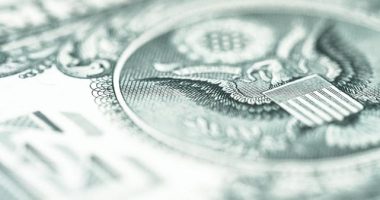In a welcome surprise for policymakers, UK inflation unexpectedly held firm in September, maintaining an annual rate of 3.8% and defying widespread predictions of an increase. The data, released by the Office for National Statistics (ONS), offers a crucial respite for Chancellor Rachel Reeves and bolsters the case for a Bank of England (BoE) interest rate cut before the year’s end.
Economists polled by Reuters had universally forecast a rise to 4.0%, making the steady figure a significant deviation from expectations. This development is particularly notable as the UK’s inflation rate continues to outpace all other G7 nations, a point recently underscored by the International Monetary Fund (IMF) in its latest world economic outlook.
A Deeper Look at the Core Data
Beyond the headline figure, a key metric watched closely by the BoE also provided cause for optimism. Services sector inflation, considered a core indicator of domestic price pressures, remained at 4.7% against a forecast of 4.9%. This suggests that underlying inflationary heat may be easing more than anticipated.
The immediate market reaction was telling. Sterling fell over half a cent against the US dollar, while traders dramatically increased their bets on a BoE rate cut in December, with the probability jumping from 46% to 75% following the data release.
“On balance, the UK’s inflation problem looks slightly less bad now than it did a few weeks ago,” noted Luke Bartholomew, deputy chief economist at investment firm Aberdeen.
Ellie Henderson, an economist at Investec, was more definitive, stating, “The year-long climb in British inflation appears to be over.” She cautioned, however, that a 3.8% rate remains “uncomfortable for the Bank of England” as it is nearly double the official 2% target.
Political and Economic Ramifications
For Chancellor Rachel Reeves, the data is a timely boost ahead of her critical budget announcement on November 26th. The UK’s high inflation has severely complicated public finances, inflating government debt costs amid rising demands for public services. As analysed by the Institute for Fiscal Studies (IFS), this creates a difficult fiscal environment, likely forcing Reeves to consider tax increases to meet her debt targets.
Responding to the figures, Reeves acknowledged the ongoing challenge. “For too long, our economy has felt stuck, with people feeling like they are putting in more and getting less out. That needs to change,” she said in a statement. “All of us in government are responsible for supporting the Bank of England in bringing inflation down.”
The Road Ahead
Despite the positive surprise, the path to the BoE’s 2% target remains long. The central bank itself does not foresee inflation returning to target until mid-2027. The September data showed a mixed picture: while transport costs pushed inflation up, the largest downward contributions came from recreation, culture, and a continued slowdown in food inflation. Food prices rose 4.3% in the year to September, a notable deceleration from August’s 4.8%.
This easing in food prices is critical, as the BoE has identified public inflation expectations as being highly sensitive to grocery bills. With the labour market also showing signs of cooling, the case for the BoE to begin cautiously lowering interest rates is growing stronger, offering a potential lifeline to a UK economy that has been grappling with stagnation.










